Kashan carpet texture structure
Kashan carpet texture structure,Upon settling and beginning to domesticate animals, man became interested in spinning and weaving textiles from plants and the hides of both domestic and wild animals. He also learned about the characteristics and lifestyle of some birds and insects. Persian rug
Clay spindles that provide insight into the early history of spinning are among the first discoveries made by archaeologists; instances of these discoveries were also discovered in Silk Kashan. The process of using braided fiber strands to create string and thread has long been used; in addition to references in literature and art, sculptures depicting people spinning or weaving have been discovered in ancient Egyptian and Babylonian works, including Medes.
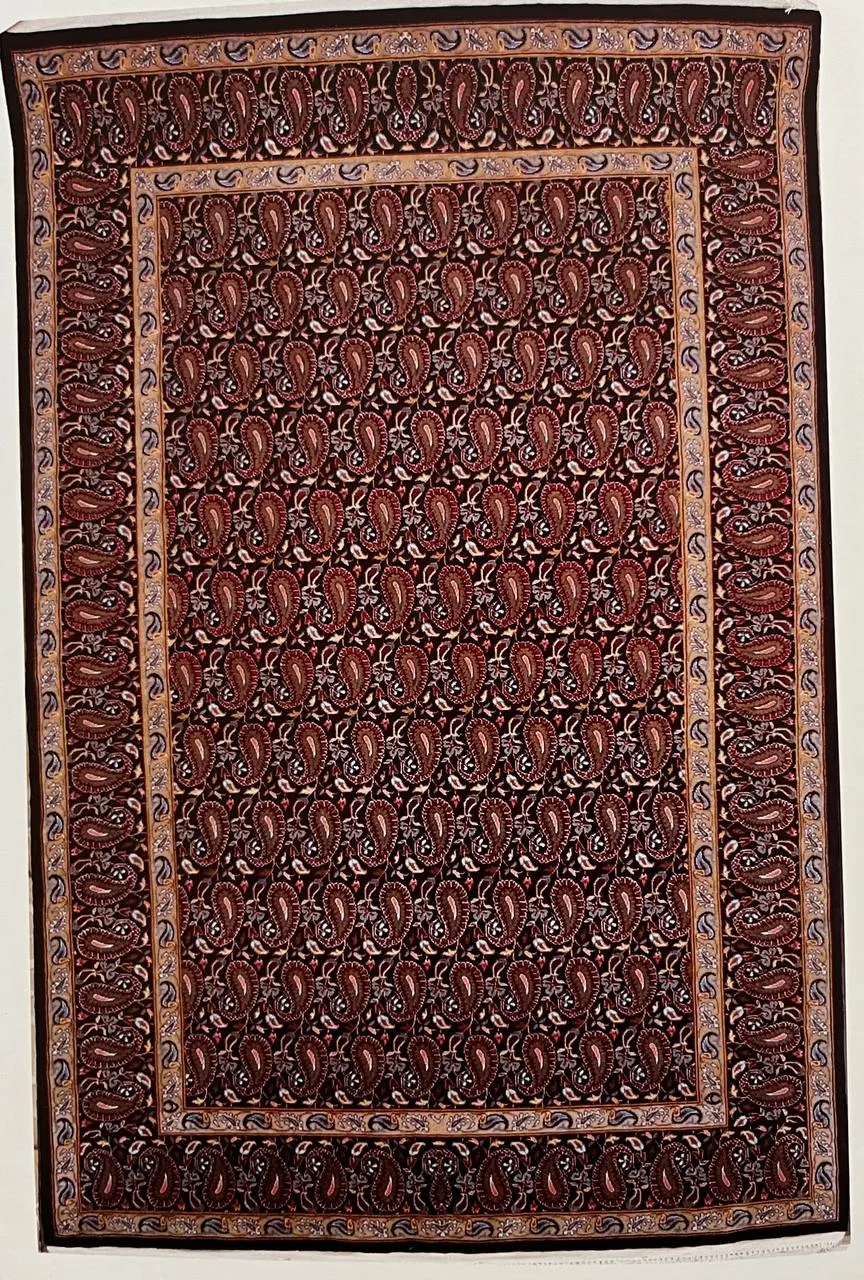
According to the first theories put out by archaeologists, threads for weaving textiles—the earliest of which may have been a type of basket or mat—were either hung from or connected to trees on both sides, just as they have been for many years when creating fishing nets and coverings. Native people in many regions have been using the earlier ones. It’s possible that early humans were introduced to a type of apparatus that allowed strings to be arranged in a specific arrangement. This marked the start of the textile industry, one of humanity’s greatest achievements. Kashan carpet texture structure
*Click on the opposite link to see precious Iranian handmade and machine combined silk carpets*
A. Simple fabrics: according to this definition, any type of simple fabric, regardless of thickness, is only used with a basic tari and weft machine, which is dependent on the usage of warp and weft, both of which can have patterns. The process involves altering the quantity, kind, or color of the warp and weft.
B. Composite fabrics: These fabrics can be woven by attaching bundles of warp or weft, utilizing a device, or adding another device to the machine. It’s a jacquard machine used for zari textures and other embossments.
C. Fluff weave: The most well-known of these textiles is velvet, which is made by including a third thread into the fabric before a fine knife is fitted onto the machine to cut it into fluff. The appearance of cut pile fabrics, commonly referred to as velvet, was influenced by the texture of the carpet and emerged during the Al-Buyeh and Seljuk eras in the sixth century of the Hijri calendar.
D. Knotted weaves: The most popular kind of weave is the carpet, which can only be altered by adjusting the size, color, and quantity of knots. Kashan carpet texture structure
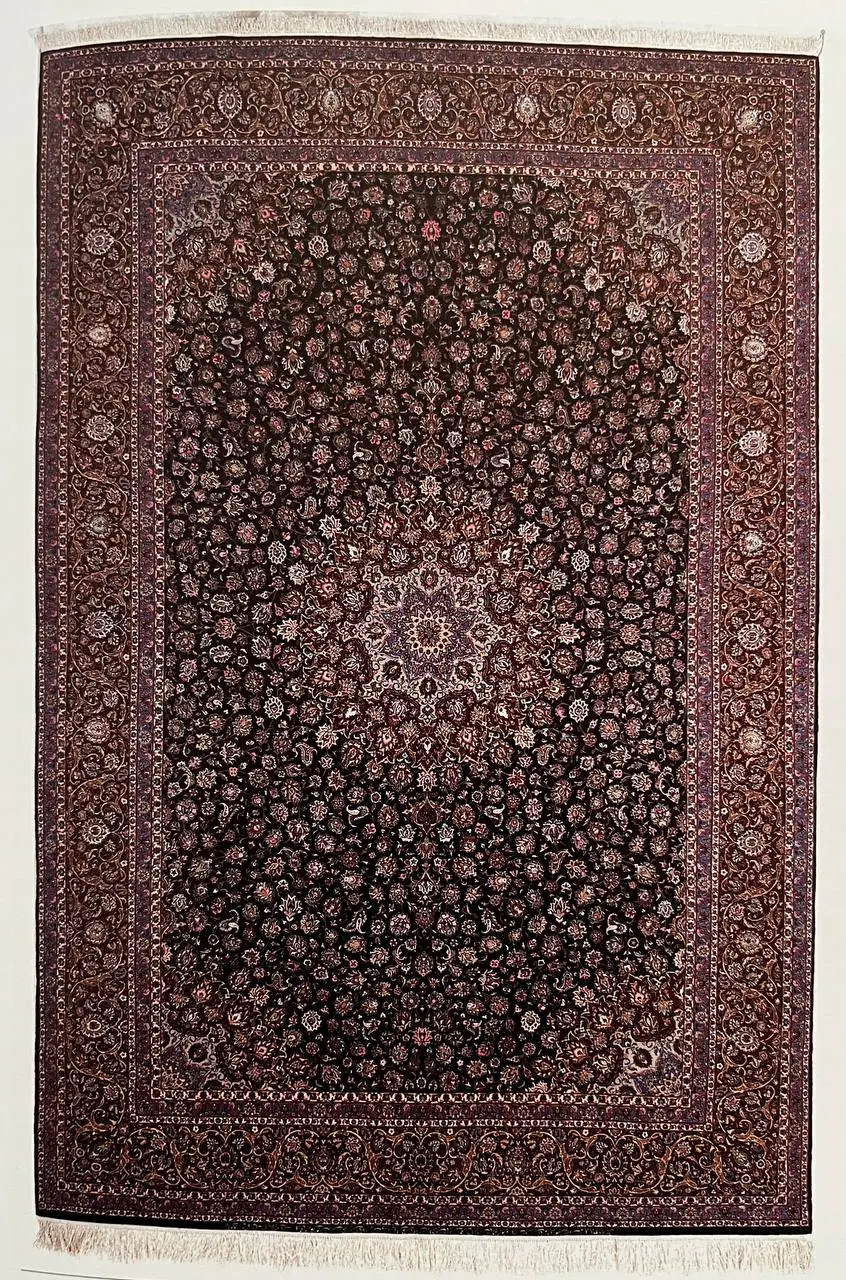
Tissue devices were gradually built according to the needs with the following goals:
Weaving machine: The most fundamental tool for producing basic Zilo rugs or persian Handmade carpets or for weaving cloth. This gadget, also known as Dar, is shaped like a right-angled frame.
A. Fabric weaving machines: As a result of the numerous variants in fabric production that emerged throughout time, these machines evolved into particular shapes for producing textiles like velvet, zari, double-sided embossed flower fabrics, etc.
According to Hansai Wolf, “This type of weaving machine dates back to the third millennium BC. It may be used to weave a wide variety of fabrics and weaves, including rugs, jajim, and zilo, using a one-way or multi-way machine. Without speaking, the ladies of the village weave exquisitely designed carpets on it. Kashan carpet texture structure
Ideally positioned mattresses or poles can be placed atop horizontal equipment.”It took millennia for multidirectional horizontal devices to evolve and become common in the majority of the world’s ancient nations. Iran has reportedly reported seeing stirrup devices with the stirrups positioned in pits.
These devices served as the foundation for multifunctional machines that could weave intricate patterns in a rotating manner, enabling the creation of embossed and zari textiles. It was later mechanically modified by the French engineer Jacquard, whose invention is still in widespread use today and goes by the name Jacquard. Kashan carpet texture structure
B. Carpet weaving machines: Since the craft has not evolved significantly since its inception, neither have the fundamental ideas guiding the creation of the various machinery used in its manufacture. Cecil Edwards offers useful information regarding carpet weaving machinery. Edwards traveled throughout most of Iran, including Kashan, during the thriving carpet-weaving era in the third decade of the 1940s.
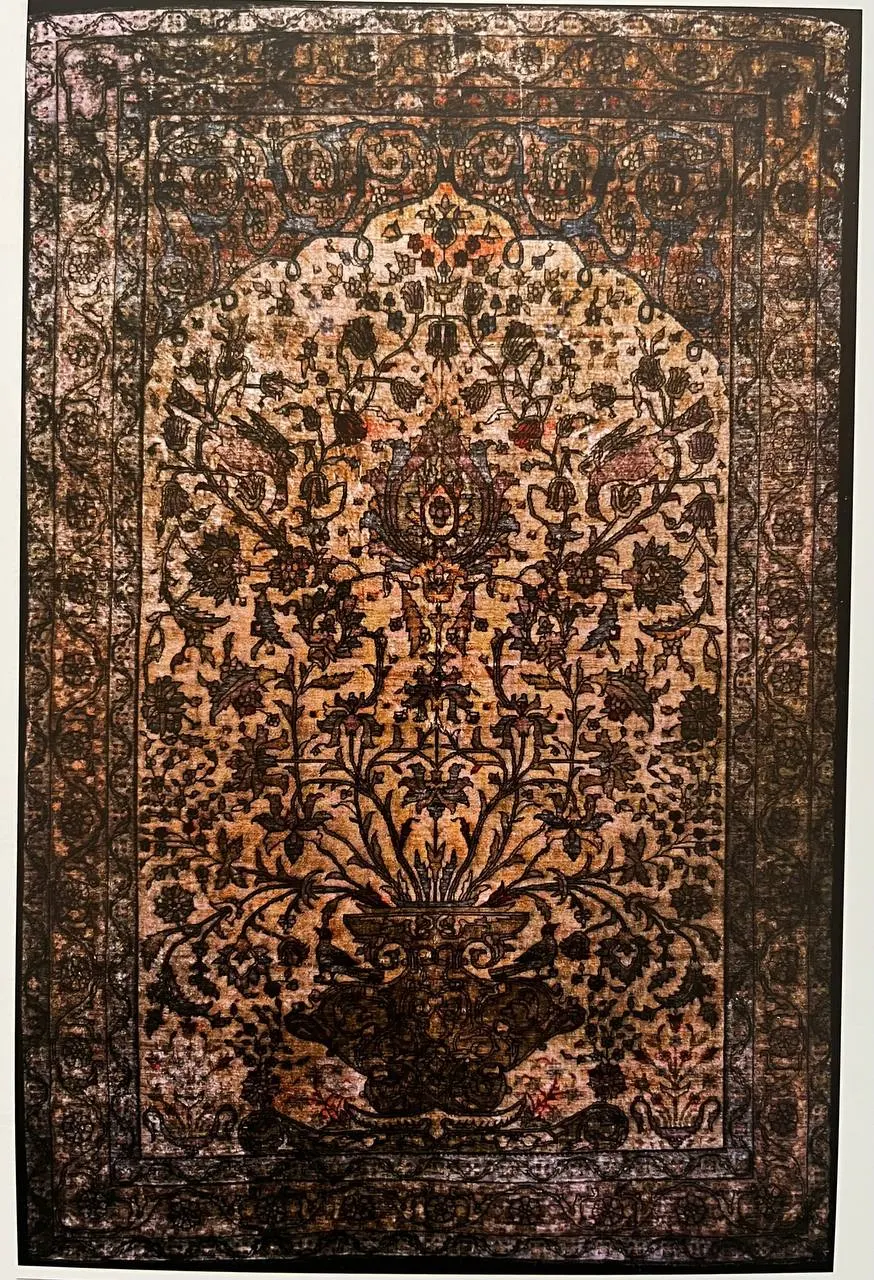
In Iran, two main types of horizontal and vertical bars are used with minor changes according to the type of application:
1.Ground machine (or horizontal): rural horizontal weaving machine; this kind of machine is used in the villages to weave native, local, and traditional rural fabrics like Silk rugs, jajim, chador, plus, tablecloths, and khurjins, among other useful handwoven fabrics. Typically, it has straight sides. Kashan carpet texture structure
2.nomadic lying ground device: Cecil Edwards states, “As I mentioned, hand-woven carpets in Iran were invented by nomadic shepherds,” after citing earlier literature. I have personally witnessed a type of crude, hurriedly woven rug that was made by ape-like shepherds.
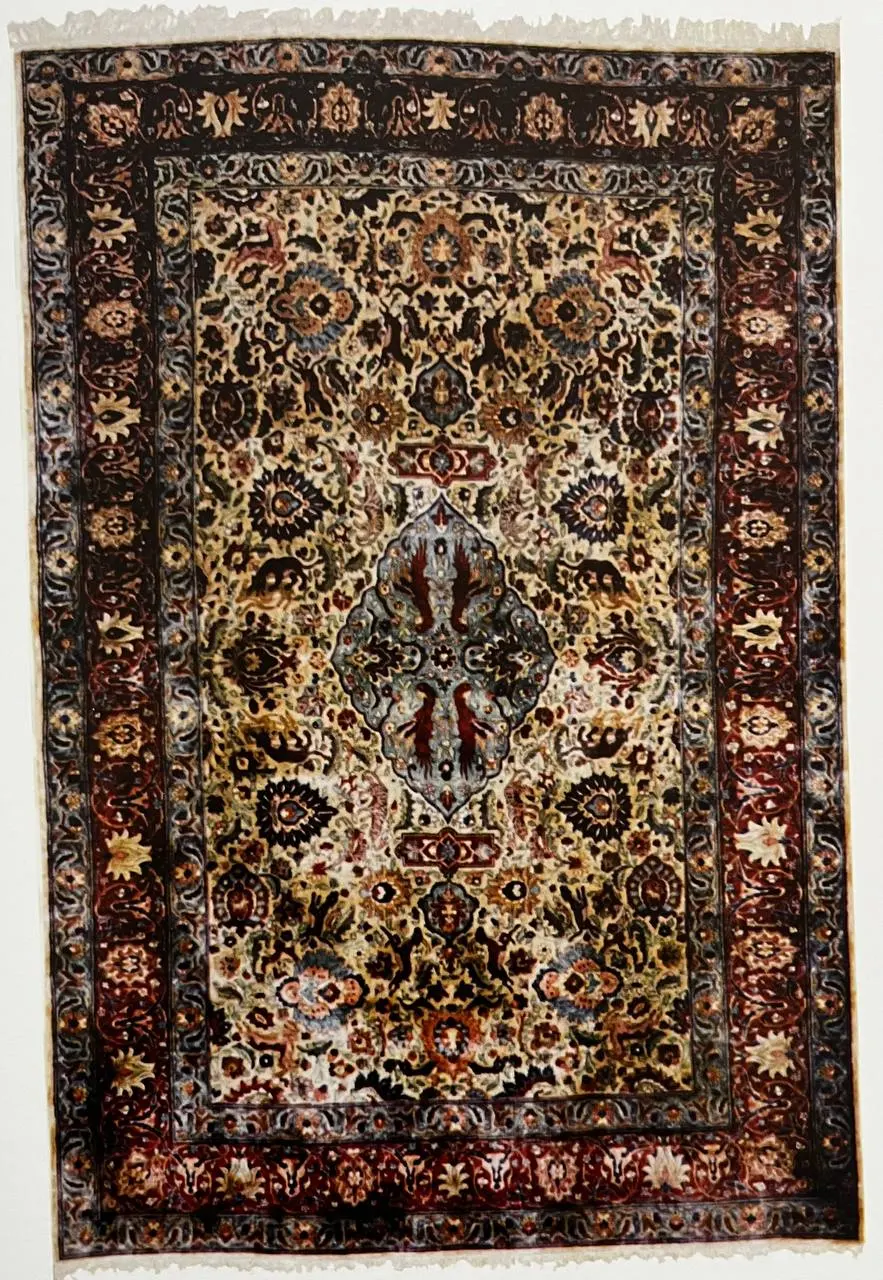
These pastoralists fashioned their Persian carpet designs using the archaic dars, which are still in use in certain communities and among nomadic people.
For the villages, this device’s portability and light weight are advantages. This apparatus
It is held in place by two wood pieces on the sides, and occasionally it is buried using two makeshift poles that are gathered during migration. Kashan carpet texture structure
3.Vertical devices: A rural fence is made up of a lower beam (Zirdar) with its head inserted into slots pierced through the wood (Bahus) and an upper fixed beam (Sardar).
According to Cecil Edwards: “Typically, the upper part is gathered in coils that are connected to the upper beam, and the chelas are tightened by hammering a wedge in Bahu. The ends of the strings or ropes in the lower part are connected to a string that is gathered in the lower beam.”
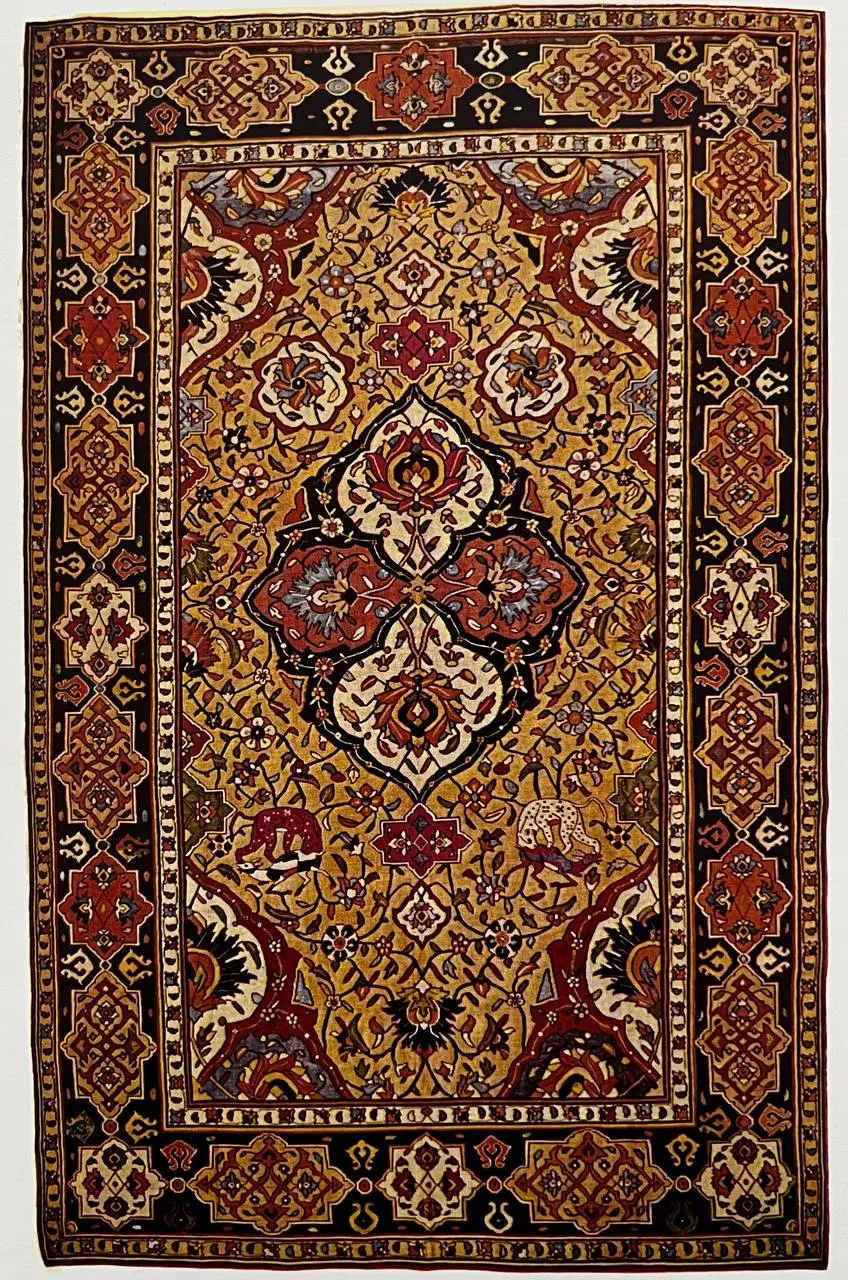
The carpet weaver sits on a thick board whose two ends are placed on the last step of the ladder, and as the work advances, they transfer the board to the next step of the ladder, as far as feasible the weaver is four or five feet (140-180 cm) m) to continue working above the floor of the room.
At this point, the carpet is freed from the hook, the wedges are removed, the upper coils are untied, and the woven portion is brought down and stitched across its breadth. Certain roof styles have the legs or the right end of the roof (vertical two-legged) anchored in the ceiling.
As a result, Tabrizi, also known as Dar Tabrizi or vertical, was presumably invented in Tabriz. Other dar varieties are not employed in Tabriz City since this particular gadget is inexpensive, straightforward to operate, and simple. The majority of the carpet weaving hubs in Iran’s central and northwest cities employ it.
There are various ways in which this dar is better than the village system previously discussed. With this kind of machine, the laborious task of wrapping the chelas, tying them to the upper beam, and sewing the woven portion to the lower beam is abolished. The chelas may also be readily freed while removing the carpet by removing four wedges from the side slits.
The woven portion is positioned on the rack and the carpet is lowered in this manner to provide easy inspection. Kashan carpet texture structure
C. Revolver: The revolving type of this device is more practical than the other two described types. Both beams are inserted into holes in this kind of apparatus, and a rod—which is occasionally made of iron—is inserted through the ends of the holes and attached to the lower beam.
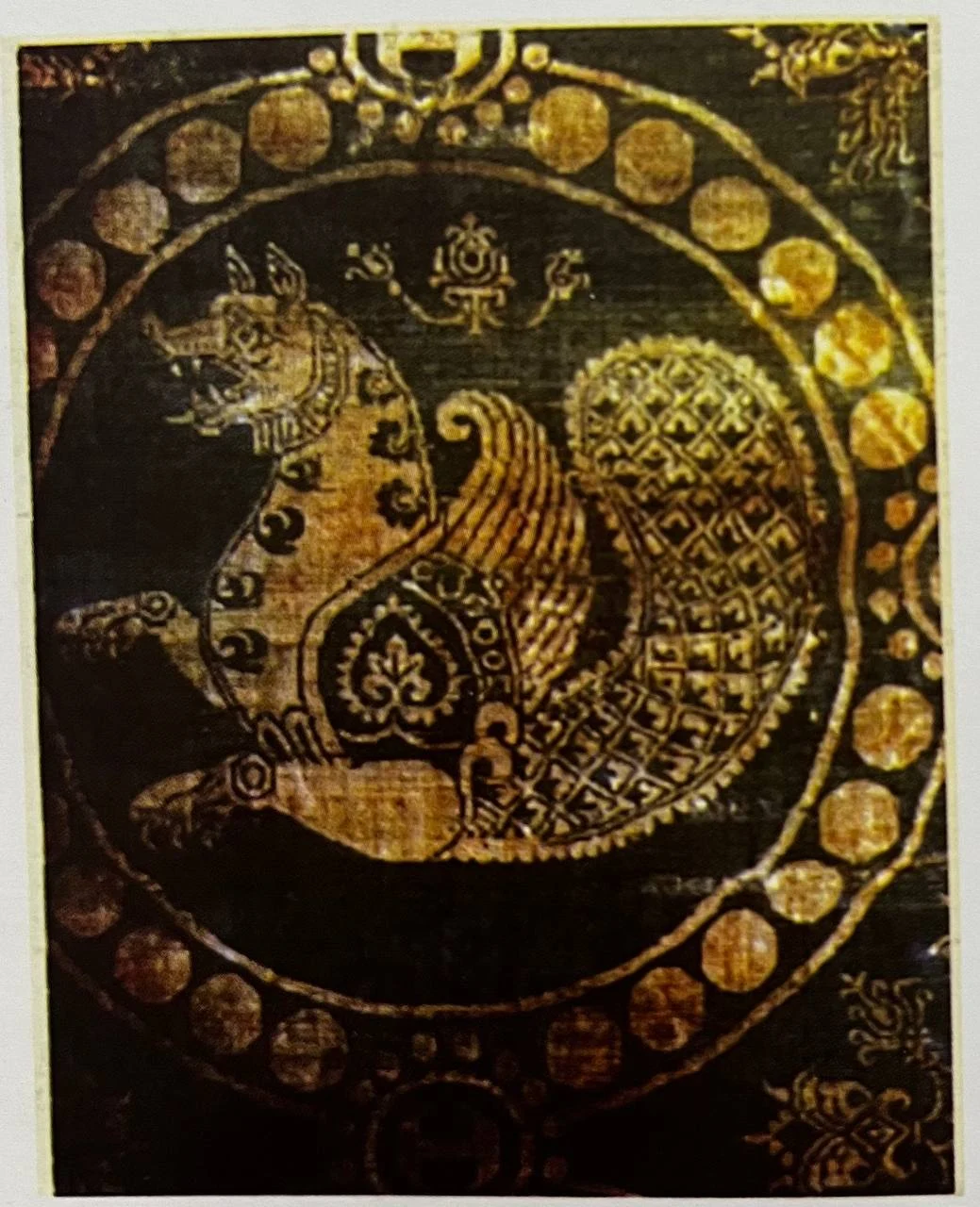
To ensure that the chelas is securely fastened, the other end of the chelas is fastened to the top beam in the same manner. The beam is then twisted using a lever. The woven portion is wrapped around the lower beam as the weaving goes on, and the threads from the upper beam are opened.
Tabriz is favored because it may be woven with carpets of any size.
Wool, cotton, and occasionally silk are used to weave games; the simplest machine to use is for this purpose.
The device is hazy. It was primarily utilized in the past for nomad handicrafts or tents or underlays in open areas. Weft thread color can be changed on simple machines to create patterns on the carpet. Weaving carpets was previously done on horizontal looms. The weave produced was typically not very wide, and these days, weaving is frequently done on vertical machines. Kashan carpet texture structure
Hans-Erich Wolff “The same basic weaving machine can be easily converted into a machine with gort if the carpet is to be plain or striped,” making a pattern on the carpet by raising and lowering bunches of wefts that are There are rounds on the device.
Mosques and other hallowed spaces are the main uses for the fabric known as zilo. They are composed of cotton, wool, and very seldom silk. The colors utilized in them are blue and white, and occasionally red and white. There are just a few patterns on it, which go by names like Zangelo, Pile Tore, and the triangular map of Garh Gachkneh.
On a standing loom with two straight sides, zilo is woven. Plain cloth and plain zilo both have a similar texture. Origins of Persian carpet
Hans E. Wolff states that “Zilbaufs occasionally have to create Zilbos with intricate designs and weave more tightly and with certain phrases and sentences. Zilu designs can be created by varying the thread color; alternately, one color of thread can be used in certain situations. For instance, when weaving a type of zilo, if the part on top is black, the part below is white, and vice versa.

Evolution of woven fabric and its effect on handwoven Kashan carpet texture structure
Although the precise history of both carpet production and cloth weaving is unknown, it is known that the two weaves have a similar structure. However, the documentation that still exists and the works that have been produced since then demonstrate how carpet and cloth weaving have evolved into what they are today, and historical records support this. The situation has changed.
It attests to the fact that the printing and weaving industries have always been growing and changing since their inception, reaching its pinnacle of perfection and beauty during eras like the Sasanian or later Safavid.
The fundamentals of rural living have evolved. This is partly explained by the basic Town carpets production machines’ flawless form, but it also demonstrates how handwoven carpet has been able to suit the needs of covering applications throughout most of history by clinging to its age-old and conventional production structure.
Nonetheless, the carpet has been impacted by the historical alterations to the fabric, if not in terms of structure then at least in terms of form. The handwoven carpet was able to demonstrate its high capacity in different types of manufacturing because of the texture of the golden and patterned Sassanid era fabrics and the soft, silky, and delicate Safavid era fabrics.

The acquisition of this opportunity was made possible in large part by the skillful craftsmen of Kashan, Glabton, and Zari velvet products and their magnificent silk carpet weaving.
- Zari weaving: Zari, also known as Glabton, is a silk fabric weave that occasionally incorporates extremely fine gold or silver threads into its structure. Historians have noted that wire rope threads were used in the weaving of Sasanian fabrics and, allegedly, in the carpets made at Bahar Khosrow. There aren’t many instances of carpets from the subsequent times up to the Safavid era, which is when these arts were revived. Instead, the majority of the images are from paintings and miniatures that depict the Timur and Safavid era patterns and the effect of silk-woven zari materials. It displays the caliber of the exquisite rugs from that time period.
Zari, one of the most iconic and well-known aspects of Iranian traditional weaving, is woven using multi-row horizontal machines that have been refined over generations in Iran.
- Glabton: Glabton is a kind of jewelry that combines gold or silver with sheets of precious metals coiled into flat wires, which are then wound around silk, twisted gut, leather, or special paper threads. For a while, zarandod leather threads were widely used in Iran during the Mongol era. However, the most popular kind of zarandod thread is zarandod thread, which is used for carpets, fabrics, and needlework, among other things.

- Velvet: Dr. Zaki Mohammad Hassan claims that velvet is the best fabric made by Iranians, with its shapes expertly prepared and painted in vibrant hues driving technological advancement. The most significant centers of this fabric are The city of Kashan produced the type of velvet in the late 10th and early 11th centuries of the Hijri (late 16th and early 17th centuries). Muhammad Khan, Ali, and Ismail Kashani were three of Kashan’s velvet weavers.
The softness and beauty of the Safavid era Persian carpets may have been influenced by the velvet’s delicate texture, but it can also be said that the appearance of velvet fabrics—which came with a blade that allowed one to cut the piles of the two-layer fabric adhered to one another—was most likely influenced by Comparable to carpets, tufted weaves predate multi-way composite weaves. In the past, several varieties of velvet were referred to as Tarz, including wavy velvet, golden velvet, checkered seven-color embossed floral, and plain velvet.
